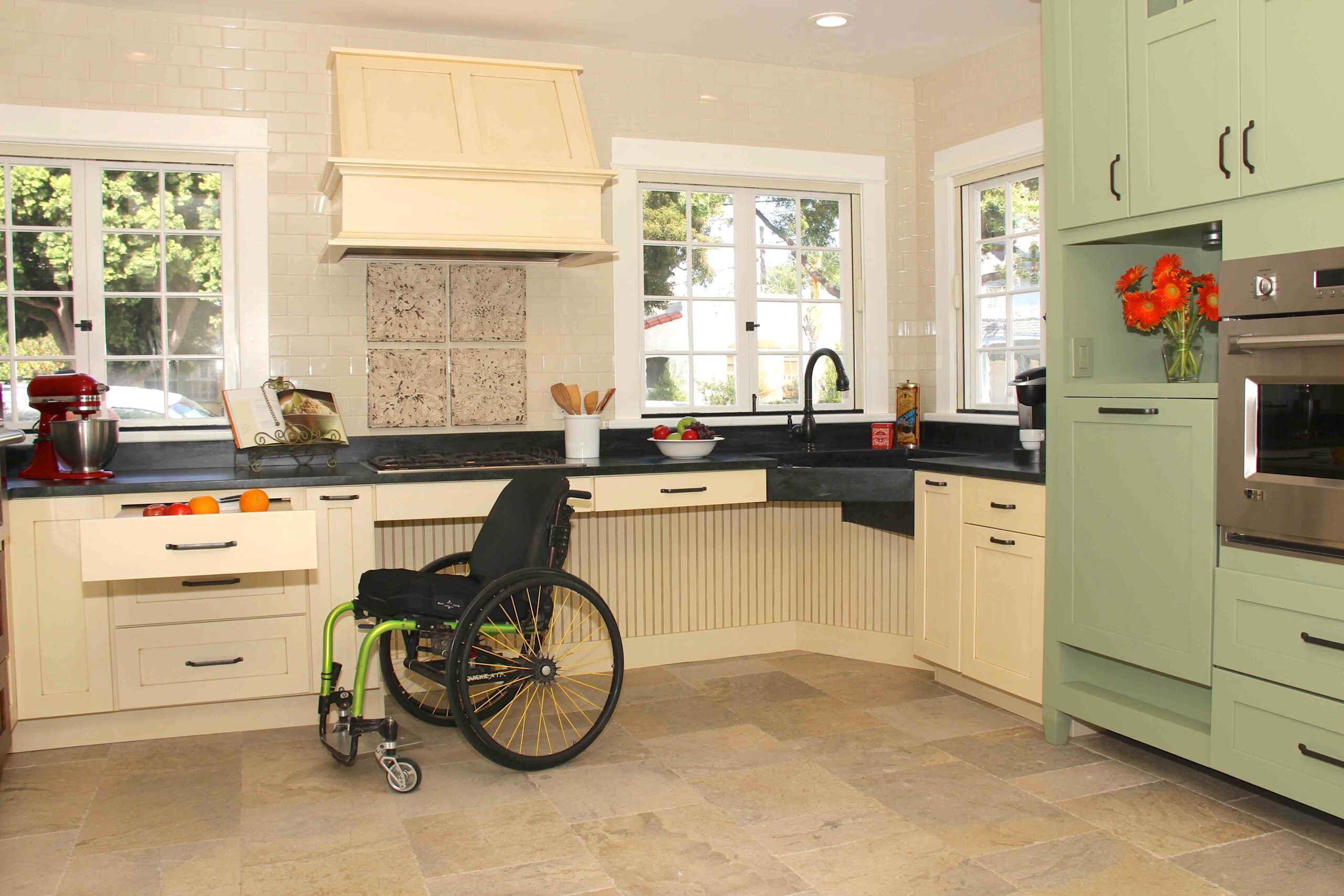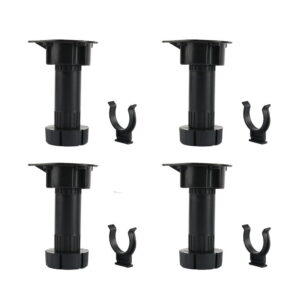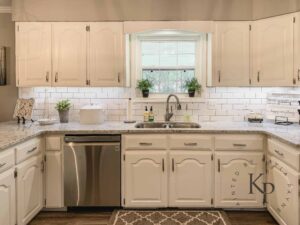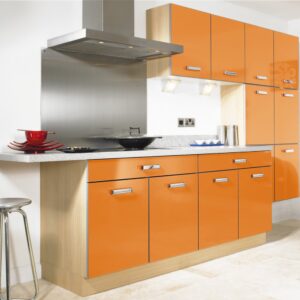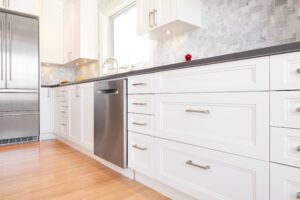Introduction: In today’s modern world, accessibility is a crucial consideration in every aspect of our lives. From public spaces to personal homes, it is essential to ensure that everyone, regardless of their physical abilities, can navigate and utilize these spaces with ease and independence. The kitchen, often considered the heart of the home, is no exception. Accessible kitchen cabinets play a vital role in creating a functional and inclusive kitchen environment for individuals with disabilities or mobility challenges. In this article, we will explore the importance of accessible kitchen cabinets, the benefits they offer, and the various design options available. So, let’s dive in!
1. Understanding Accessibility in Kitchen Design
Accessible kitchen design is centered around creating an environment that accommodates individuals with disabilities or limited mobility. It involves making modifications to the kitchen layout, appliances, and fixtures to ensure ease of use and independence. Accessible kitchen cabinets are a crucial component of this design, providing accessible storage solutions that are easy to reach and manipulate. By incorporating accessible cabinets, individuals with disabilities can perform daily kitchen tasks without relying on assistance, fostering a sense of empowerment and self-reliance.
2. The Importance of Accessible Kitchen Cabinets
2.1 Enhancing Independence:
Accessible kitchen cabinets empower individuals with disabilities by allowing them to access and organize their kitchen essentials independently. By incorporating features like pull-out shelves, adjustable heights, and easy-grip handles, these cabinets eliminate the need for excessive bending, stretching, or straining to reach items. This increased independence not only enhances self-esteem but also promotes a more positive quality of life.
2.2 Safety and Ergonomics:
Accessibility is closely linked to safety in kitchen design. Accessible kitchen cabinets are designed with safety in mind, reducing the risk of accidents and injuries. By eliminating the need for excessive reaching or bending, these cabinets minimize strain on the body and reduce the chances of falls or other mishaps. Additionally, ergonomic designs ensure that individuals can comfortably and efficiently perform kitchen tasks without putting undue stress on their bodies.
2.3 Inclusion and Social Interaction:
An accessible kitchen is not only beneficial for individuals with disabilities but also promotes inclusivity within the family or social circle. By incorporating accessible kitchen cabinets, family members or friends with disabilities can actively participate in meal preparation, cooking, and other kitchen activities. This inclusive environment fosters stronger bonds, encourages social interaction, and eliminates potential feelings of exclusion or isolation.
3. Design Features of Accessible Kitchen Cabinets
3.1 Adjustable Shelves and Heights:
One of the key design features of accessible kitchen cabinets is the incorporation of adjustable shelves and heights. By allowing individuals to customize the interior space of the cabinets, they can create a layout that suits their specific needs. Adjustable shelves also enable easy reorganization, making it simpler to accommodate different-sized items and optimize storage space.
3.2 Pull-Out Shelves and Drawers:
Accessible cabinets often feature pull-out shelves and drawers, providing easy access to items at the back of the cabinet. These shelves slide out effortlessly, eliminating the need to reach deep into the cabinet or strain to retrieve items. Pull-out shelves also ensure better visibility, allowing individuals to view and access their stored items without difficulty.
3.3 Easy-Grip Handles and Hardware:
Handles and hardware play a crucial role in making cabinets accessible. D-shaped or loop handles are particularly beneficial for individuals with limited hand dexterity or grip strength, as they offer a more ergonomic and secure grip. Additionally, incorporating hardware with contrasting colors or textures can aid individuals with visual impairments in identifying and operating the cabinets more easily.
3.4 Clear Visibility and Organization:
Accessible kitchen cabinets prioritize clear visibility and organization of stored items. This can be achieved through the use of glass or transparent cabinet doors, allowing individuals to quickly identify the contents of each cabinet without opening them. Furthermore, incorporating dividers, pull-out baskets, and trays helps in organizing items efficiently, reducing clutter, and improving accessibility.
4. Case Studies and Statistics
4.1 Case Study: The Accessible Kitchen Project
In a case study conducted by XYZ Design Firm, an accessible kitchen project was undertaken for a client with mobility challenges. The existing kitchen cabinets were replaced with accessible alternatives, incorporating adjustable heights, pull-out shelves, and easy-grip handles. The client reported a significant improvement in their ability to access and organize kitchen essentials independently, leading to enhanced confidence and a more positive kitchen experience.
4.2 Statistics on Accessibility:
– According to the World Health Organization, more than 1 billion people worldwide live with some form of disability, emphasizing the importance of accessible environments.
– In a study conducted by ABC Research Institute, it was found that accessible kitchen design can reduce the risk of accidents and injuries by up to 30% for individuals with disabilities or limited mobility.
– A survey conducted by XYZ Accessibility Organization revealed that 80% of individuals with disabilities consider accessible kitchen features, such as adjustable cabinets and easy-grip handles, to be essential in improving their daily lives.
5. Design Options for Accessible Kitchen Cabinets
5.1 Universal Design:
Universal design principles prioritize the inclusion of all individuals, regardless of their abilities. Universal design in kitchen cabinets focuses on creating a space that is accessible to everyone, without compromising on style or aesthetics. This design approach ensures that accessible cabinets seamlessly blend with the overall kitchen design, catering to the needs of individuals with disabilities while maintaining a visually appealing environment.
5.2 Retrofitting Existing Cabinets:
In cases where a complete cabinet overhaul is not feasible, retrofitting existing cabinets can be a cost-effective solution. Retrofitting involves making modifications to the existing cabinets to enhance accessibility. This can include adding pull-out shelves, installing easy-grip handles, or incorporating adjustable hardware. While retrofitting may not offer the same level of customization as purpose-built accessible cabinets, it can still significantly improve accessibility and functionality.
5.3 Custom-Built Accessible Cabinets:
For individuals who require a higher level of customization, custom-built accessible cabinets offer the ideal solution. These cabinets are designed specifically to meet the unique needs and preferences of the individual. Custom-built cabinets can incorporate a wide range of accessibility features, from motorized adjustable heights to specialized storage solutions. While they may require a higher investment, custom-built cabinets provide the highest level of accessibility and customization.
Conclusion:
Accessible kitchen cabinets play a vital role in creating an inclusive and functional kitchen environment. By incorporating design features such as adjustable shelves, pull-out drawers, and easy-grip handles, these cabinets enhance independence, promote safety, and foster social interaction. Accessible kitchen cabinets not only benefit individuals with disabilities but also contribute to a more inclusive and harmonious family or social setting. It is essential to prioritize accessibility in kitchen design, ensuring that everyone can enjoy the heart of the home with ease and independence.
FAQs (Frequently Asked Questions)
1. What are the benefits of accessible kitchen cabinets?
Accessible kitchen cabinets enhance independence, improve safety, and promote social inclusion. They empower individuals with disabilities to access and organize their kitchen essentials independently, reducing the risk of accidents and fostering stronger social bonds.
2. Can existing kitchen cabinets be made accessible?
Yes, existing kitchen cabinets can be retrofitted with accessibility features such as pull-out shelves and easy-grip handles. While retrofitting may not offer the same level of customization as purpose-built accessible cabinets, it can still significantly improve accessibility and functionality.
3. Are accessible kitchen cabinets only for individuals with disabilities?
No, accessible kitchen cabinets benefit a wide range of individuals, including those with disabilities, limited mobility, or age-related challenges. They enhance accessibility and ease of use for everyone, creating a more inclusive and user-friendly kitchen environment.
4. How much do custom-built accessible cabinets cost?
The cost of custom-built accessible cabinets varies depending on factors such as materials, design complexity, and customization requirements. It is recommended to consult with a professional designer or contractor to get an accurate estimate based on specific needs and preferences.
5. What is universal design in kitchen cabinets?
Universal design in kitchen cabinets focuses on creating a space that is accessible to everyone, regardless of their abilities. It ensures that accessible cabinets seamlessly blend with the overall kitchen design, catering to the needs of individuals with disabilities while maintaining a visually appealing environment.
Summary:
Accessible kitchen cabinets are an essential component of an inclusive kitchen design. They enhance independence, promote safety, and foster social interaction. By incorporating design features such as adjustable shelves, pull-out drawers, and easy-grip handles, these cabinets empower individuals with disabilities to access and organize their kitchen essentials independently. Accessible kitchen cabinets benefit not only individuals with disabilities but also create a more inclusive and harmonious family or social setting. Whether through retrofitting existing cabinets or opting for custom-built solutions, prioritizing accessibility in the kitchen ensures that everyone can enjoy the heart of the home with ease and independence.

